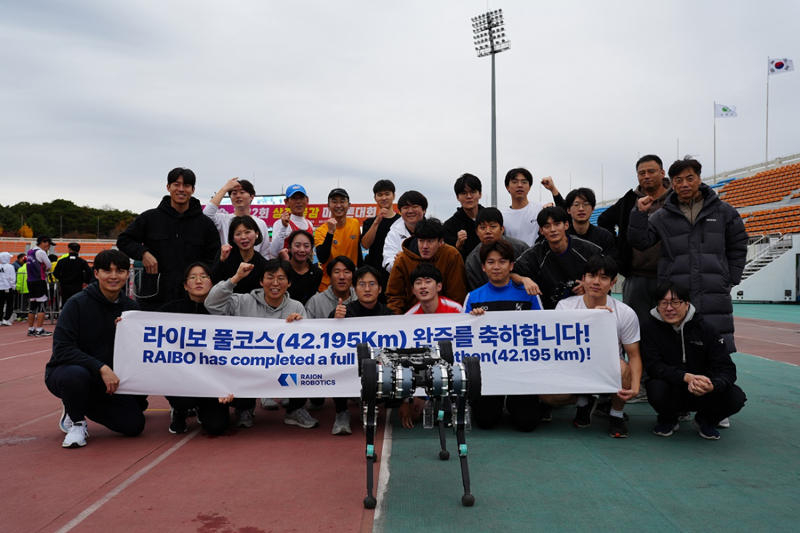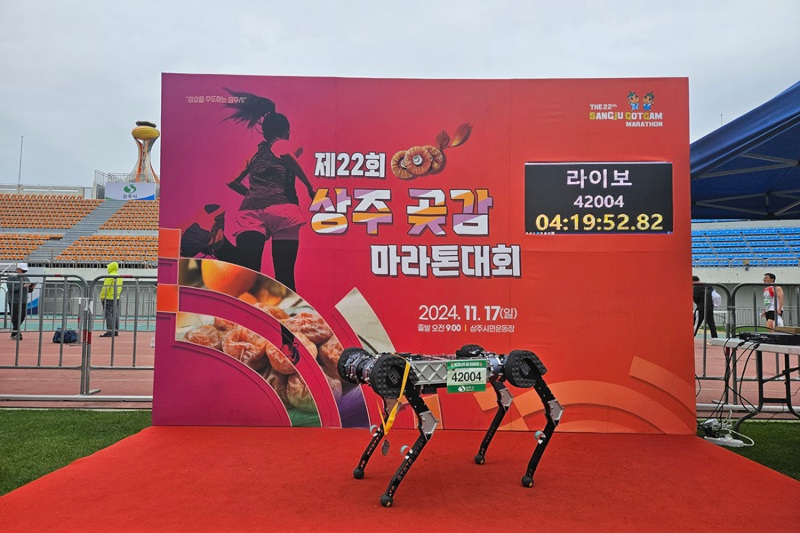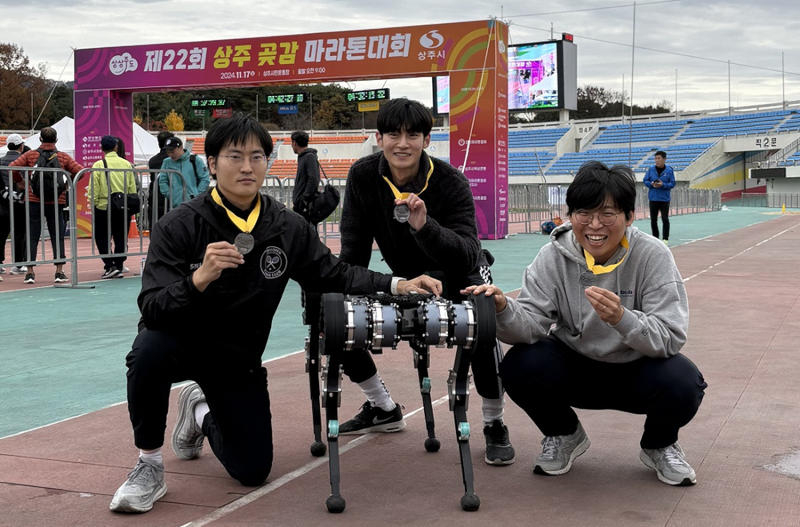Engineers from the Korea Advanced Institute of Technology (KAIST) organized the participation of the dog-like robot RAIBO2 in the twenty-second Sangju Dried-Persimmon marathon race. This required a number of difficult technical solutions.

Image source: news.kaist.ac.kr
The winner of the last race – a man – covered the marathon 42 km 195 m in 2 hours 36 minutes and 32 seconds; the RAIBO2 robot covered this distance in 4 hours, 19 minutes and 52 seconds. The car covered the required distance, including two 50-meter climbs, on a single battery charge. The course with elevation changes was not easy for the robotic dog – difficult terrain means “unforeseen losses in efficiency.” Using reinforcement learning in the RaiSim simulation environment, the young scientists ensured RAIBO2 was able to stably navigate slopes and icy roads. The first generation RAIBO could walk on sand.

The high-torque articulation mechanism helped the RAIBO2 capture excess energy on the descents, which was then used on the climbs and other sections of the trail. Assistance to KAIST students was provided by specialists from the company Raion Robotics, founded by one of the professors of the institute: young engineers developed for RAIBO2 a system for mitigating vibrations and shocks that could damage the mechanics of the machine; Raion Robotics integrated components that reduced drive losses and increased control system throughput. The company also took upon itself the refinement of mechanics, electrical, software and artificial intelligence.

The authors of the project plan to continue to enter RAIBO2 to participate in marathon races – in the future the car will receive autonomous navigation. Samsung showed interest in the project, but the institute did not specify what contribution the electronics giant made to it. In practice, a dog-like robot with such abilities could be used in mountainous areas and in natural disasters.